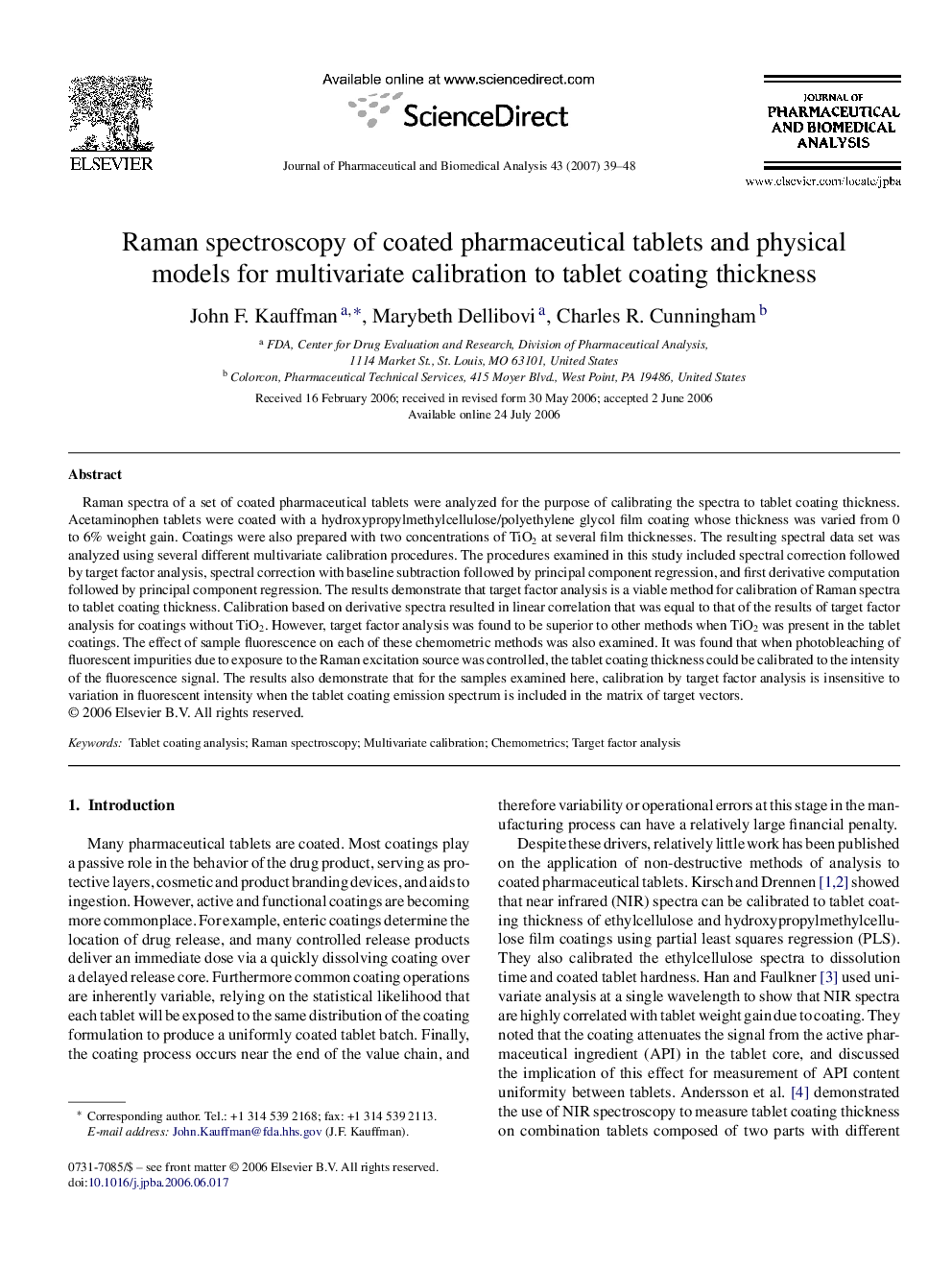| Article ID | Journal | Published Year | Pages | File Type |
|---|---|---|---|---|
| 1224802 | Journal of Pharmaceutical and Biomedical Analysis | 2007 | 10 Pages |
Raman spectra of a set of coated pharmaceutical tablets were analyzed for the purpose of calibrating the spectra to tablet coating thickness. Acetaminophen tablets were coated with a hydroxypropylmethylcellulose/polyethylene glycol film coating whose thickness was varied from 0 to 6% weight gain. Coatings were also prepared with two concentrations of TiO2 at several film thicknesses. The resulting spectral data set was analyzed using several different multivariate calibration procedures. The procedures examined in this study included spectral correction followed by target factor analysis, spectral correction with baseline subtraction followed by principal component regression, and first derivative computation followed by principal component regression. The results demonstrate that target factor analysis is a viable method for calibration of Raman spectra to tablet coating thickness. Calibration based on derivative spectra resulted in linear correlation that was equal to that of the results of target factor analysis for coatings without TiO2. However, target factor analysis was found to be superior to other methods when TiO2 was present in the tablet coatings. The effect of sample fluorescence on each of these chemometric methods was also examined. It was found that when photobleaching of fluorescent impurities due to exposure to the Raman excitation source was controlled, the tablet coating thickness could be calibrated to the intensity of the fluorescence signal. The results also demonstrate that for the samples examined here, calibration by target factor analysis is insensitive to variation in fluorescent intensity when the tablet coating emission spectrum is included in the matrix of target vectors.
